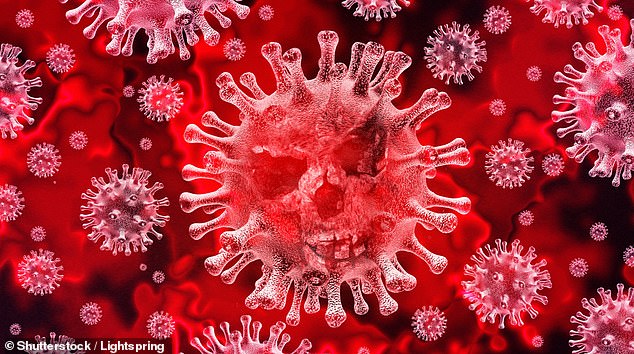The statistics are shocking. As of mid-June, Black Americans have been hospitalized or died from COVID-19 at a rate about five times that of white Americans, according to the U.S. Centers for Disease Control. Other people of color have experienced much higher hospitalization and death rates than whites as well.
A recent report indicated that if people of color had experienced the same mortality rate as whites, as of late May, more than 14,000 Black Americans would still be alive, along with 1,200 Latino Americans and 400 indigenous Americans.
Tufts experts in public health and community health said they are not surprised by these numbers. “Even prior to the COVID-19 pandemic, we were already in a public health crisis,” said Adolfo Cuevas, an assistant professor of community health in the School of Arts and Sciences. “More than half of Black individuals have a chronic health condition” such as diabetes or high blood pressure, he said, which predisposes people to suffer from the COVID-19 virus. “The racial difference is striking already.”
Ndidiamaka Amutah-Onukagha, an associate professor of public health at the School of Medicine, said, “I think the mortality and morbidity that we’re seeing in COVID-19 is directly related to decades of systemic racism and the impact of racism on communities of color. Racism plays out in the rationing of equipment for people who are testing positive for COVID and even in back room decisions about who is eligible to get tests.”
A number of factors contribute to the health disparities highlighted by COVID-19. Black Americans are more likely to be essential workers, who must work and interact with other people—delivery drivers, grocery store employees, transit workers. They also are disproportionately low-wage workers, unable to afford to not work, said Amutah-Onukagha.
“They don’t have the luxury of working from home and shifting their livelihood to a virtual environment,” she said. “They are still going to have to deal with people face to face.”
Blacks also shoulder a higher burden of chronic disease, with up to 40 percent higher rates of high blood pressure and up to 60 percent higher rates of diabetes than white Americans, she said. Both conditions are increase risk for serious illness from COVID-19, according to the CDC.
Cuevas, whose research focuses on obesity, noted that about 40 percent of individuals nationally has the condition, a risk factor for increasing complications from the coronavirus. But about half of Black Americans have obesity compared to about 40 percent of whites. “So, the racial difference was already alarming,” he said. “What COVID-19 basically has done is exacerbate these racial disparities even more.”
Stress is a risk factor, too. “We know that when you put people in racially charged situations, their blood pressure goes up and their cortisol levels goes up,” said Amutah-Onukagha, who has done research on maternal health among women of color. Cortisol is the body’s main stress hormone, and heightened levels of it increase the frequency of preterm birth, low birth weight, and infants and mothers dying, she said.
The body’s physiologic response to stress “is really having an impact front and center for African Americans,” said Amutah-Onukagha.
Cuevas, who trained as a psychologist, agreed that stress has a physical and emotional effect. “Racial and ethnic minorities report experiencing a wide range of stressors day-to-day—financial strain, relationship problems, discrimination,” he said. “That accumulates over time to adversely affect both the mental and physical health of the individual.”
Add that to the lack of access to health care and to healthy foods and vegetables—and living in communities that are high in environmental toxins and pollutants—”it becomes a really bad soup that contributes to high rates of all these diseases,” he said.
Living conditions matter, too. “Black and brown populations, who have already been suffering from chronic conditions, live in areas that do not facilitate social distancing,” said Cuevas. That in turn causes the virus to spread at a quicker rate and suffer disproportionately from the virus.
Many of the current living conditions arose out of discriminatory policies from the past, Cuevas said. He pointed to government-supported neighborhood redlining from the 1930s to the 1960s—a practice that kept Black communities from building wealth
“Even after the 1960s laws prohibiting redlining, the effects of these practices persist,” he said. “The systematic denial of services limited people’s opportunities to get decent jobs and education, which some scholars suggest led to an overrepresentation of Black people in poverty and working menial labor jobs, which are two factors preventing many from staying at home.”
Likewise, it’s more difficult for people to practice social distancing in these neighborhoods, because residents tend to live in small apartments and with a sizable number of other individuals, he said. “Once you place more of the historical perspective into it, all of these health disparities make a lot more sense.”
Overcoming all these systemic deficits, which lead to health disparities that are especially vivid with the COVID-19 pandemic, is vital—and difficult, Amutah-Onukagha and Cuevas said.
“There is an opportunity here for community health scientists and elected officials to really change the social and public health landscape of the United States,” Cuevas said. “There needs to be real radical change to actualize equal opportunity for all. As community health scientists and elected officials, we must continue to highlight and address the social determinants of health disparities. As citizens, we must engage in local civic and political action to achieve equity near us.”
There is “a huge opportunity for public health, for medicine, and for everyone interested in social justice,” added Amutah-Onukagha. “Find ways to get involved and to make your voice heard. We are the change. No one else is going to do it except for us.”
Taylor McNeil, Tufts University


